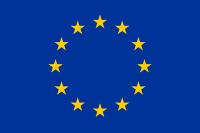8 Impact Areas
Explore the eight impact areas of digital cultural participation
About this process
This process belongs to Change Impact Assessment Framework
Explore the eight impact areas of digital cultural participation
In the following section you can find a description of the 8 Impact Areas of cultural active participation in the digital realm and the characteristics of the proposed conceptual map.
The presented theory could be used by CHIs both for orienting the planning of a participative activity, and for building a set of tailored indicators for measuring if any positive change happened in all or some of the impact areas, after the active participation of the targeted community in the activity. In the following sections, you will find some suggestions on how to implement it within an impact assessment.

In terms of features, the matrix of the conceptual map should be considered:
- inspirational - it can help public or private users to focus on generating impacts;
- hyperdimensional - different areas have different weights and sizes, it has to be read as an asymmetric geometry;
- interpretable - to eventually assess the impacts and the changing generated by them, each user can make its own indicator;
- open to collective enrichment - there are infinite possibilities of best practices and new cases that can help to develop the matrix;
- flexible - all the areas are strongly interdependent, there is no well-defined limit between them and the same impact can cover different areas.





Share: